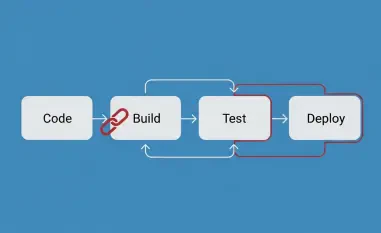In a rapidly evolving digital landscape, tax season has become a prime time for cybercriminals to exploit unsuspecting individuals. The rise of artificial intelligence (AI) has added a new dimension to these scams, enabling criminals to create highly convincing phishing attempts using deepfake audio and generative AI. These sophisticated methods mimic the voices of tax preparers, accountants, or IRS officials, leveraging stolen personal information to enhance the credibility of their fraudulent schemes. As AI-driven tax scams become more prevalent, it is crucial to understand the mechanisms behind them and adopt measures to safeguard sensitive financial data.
The Mechanics of AI-Driven Tax Scams
Deepfake Audio and Generative AI in Cybercrime
The integration of AI into cybercrime has led to a significant increase in the scale and believability of tax-related scams. Deepfake audio technology, which replicates voices with uncanny accuracy, is now used by cybercriminals to impersonate trusted figures. By mimicking the voices of tax professionals or government officials, they can deceive taxpayers into divulging confidential financial information. Generative AI further enhances these scams by creating realistic scenarios and conversations, making it increasingly difficult for victims to distinguish between legitimate and fraudulent communications.
Experts like Casey Ellis of Bugcrowd emphasize that AI has expanded the scope of phishing attacks, enabling criminals to employ highly convincing tactics. These scams are no longer limited to emails; they now encompass voice calls and even videos, making them more invasive and harder to detect. The advent of these technologies marks a turning point in cybercrime, where the line between reality and deception becomes increasingly blurred, posing a significant threat to individuals and organizations alike.
Targeting Personal Information
AI-driven tax scams often rely on a wealth of personal information obtained through various means, including data breaches and social engineering. Once cybercriminals have access to sensitive information such as Social Security numbers, they can craft personalized attacks that appear legitimate. Patrick Tiquet of Keeper Security highlights the danger of these realistic impersonations, which can involve not only IRS agents and tax professionals but also family members. The familiarity and trust associated with these voices can lead victims to unwittingly share critical financial details.
To combat these sophisticated scams, experts advise individuals to remain vigilant for inconsistencies in communications. Verifying the identity of the caller or the sender before sharing any information is crucial. Tools such as reverse image and video searches can help detect artificially generated content, providing an additional layer of security. Staying informed about the latest tactics employed by cybercriminals and adopting proactive measures can significantly reduce the risk of falling victim to AI-driven tax scams.
Traditional and Novel Tax Season Schemes
Mobile-first Attacks
While AI-driven scams are on the rise, traditional cyber schemes continue to evolve, adapting to new technologies and platforms. Kern Smith of Zimperium points to an increase in mobile-first attacks during tax season. These attacks often involve text messages that pose as the IRS or legitimate tax services, urging recipients to click on malicious links or download fake apps. The objective is to steal login credentials and financial information, potentially compromising entire accounts.
Mobile devices, with their widespread use and ingrained trust, present an appealing target for cybercriminals. Text messages appear more personal and urgent, prompting quick action from recipients. The rise of mobile-first attacks underscores the need for heightened awareness and caution when dealing with any unsolicited communication during tax season. Ensuring that mobile security features are up-to-date and avoiding clicking on suspicious links can help mitigate these risks.
Phishing Sites and Spoofed Platforms
Another prevalent method used by cybercriminals is the creation of phishing sites and spoofed platforms designed to trick individuals seeking tax-related services. These fake websites often appear legitimate, employing search engine optimization (SEO) poisoning to rank highly in search results. As a result, individuals searching for terms like “tax refund” or well-known tax companies such as H&R Block may inadvertently end up on fraudulent sites. These platforms capture sensitive data, leading to potential financial loss and identity theft.
Casey Ellis of Bugcrowd notes that unpatched vulnerabilities in tax software can further exacerbate the problem, allowing cybercriminals to exploit known weaknesses and gain unauthorized access to personal information. The combination of sophisticated phishing tactics and software vulnerabilities creates a challenging environment for taxpayers. Remaining cautious when providing personal information online and ensuring that tax software is regularly updated can provide a measure of protection against these threats.
The Broader Impact on Cybersecurity
Microsoft’s Observations on Tax-themed Phishing Emails
Microsoft’s recent blog post sheds light on the scale and persistence of tax-themed phishing emails, highlighting the extensive campaigns that target thousands of organizations, primarily in the engineering, IT, and consulting sectors across the United States. These emails often carry subjects related to the IRS, exploiting the trust and urgency associated with tax matters. By spreading malware through these communications, cybercriminals aim to infiltrate networks and steal sensitive data on a large scale.
The prevalence of these attacks underscores the need for robust cybersecurity measures within organizations. Ensuring that employees are educated about the risks of phishing emails and implementing advanced security solutions can help mitigate the impact of these threats. The collaboration between technology companies and security experts is crucial in developing effective strategies to combat AI-driven tax scams and protect sensitive financial data from falling into the wrong hands.
Vigilance and Verification
In light of these evolving threats, experts unanimously stress the importance of vigilance and verification during tax season. The believability of AI-driven tax scams necessitates a higher level of scrutiny and caution when dealing with any tax-related communications. Individuals and organizations alike must adopt a proactive stance, verifying the identity of callers, senders, and websites before sharing any confidential information.
Incorporating comprehensive cybersecurity practices, such as multi-factor authentication and regular software updates, can provide an additional layer of defense against these sophisticated attacks. By remaining informed about the latest trends in cybercrime and implementing robust security measures, taxpayers can significantly reduce their vulnerability to AI-driven tax scams and protect their financial data from exploitation.
Strengthening Cybersecurity in the Face of Advanced Threats
In today’s quickly changing digital environment, tax season has become a prime opportunity for cybercriminals to target unsuspecting people. The emergence of artificial intelligence (AI) has introduced a new level of sophistication to these scams. Criminals now use advanced techniques like deepfake audio and generative AI to execute highly convincing phishing attempts. These methods are so refined that they can imitate the voices of tax preparers, accountants, or even IRS officials, making their fraudulent schemes appear highly credible. They often leverage stolen personal data to further enhance the authenticity of these scams.
As AI-driven tax scams grow more common, it’s vital for everyone to understand how these scams operate. This knowledge is essential to protect sensitive financial information. Staying informed about the ways cybercriminals exploit technology and adopting safeguarding measures can significantly reduce the risks. It’s more important than ever to remain vigilant during tax season and ensure personal data is well protected.













